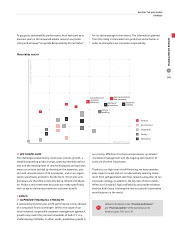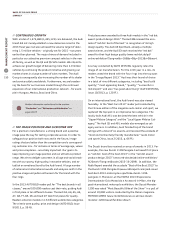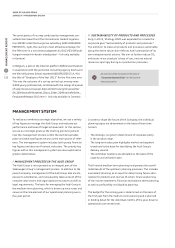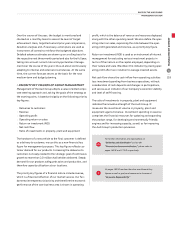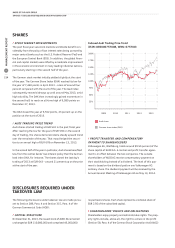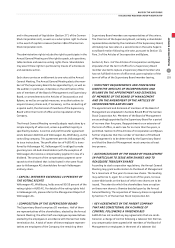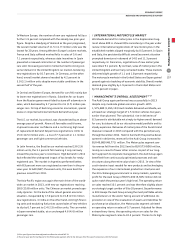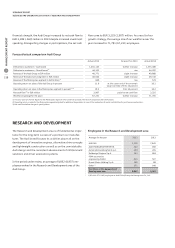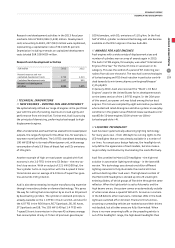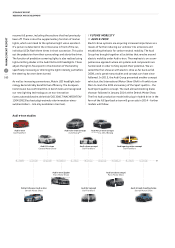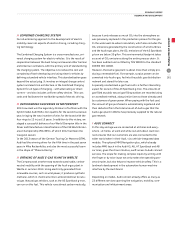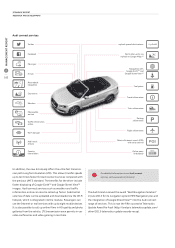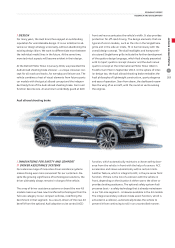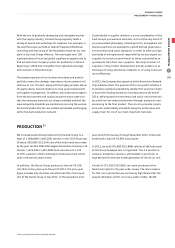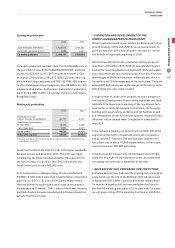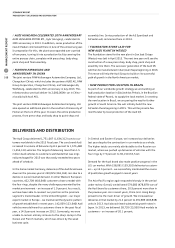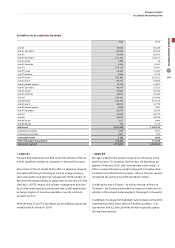Audi 2013 Annual Report Download - page 162
Download and view the complete annual report
Please find page 162 of the 2013 Audi annual report below. You can navigate through the pages in the report by either clicking on the pages listed below, or by using the keyword search tool below to find specific information within the annual report.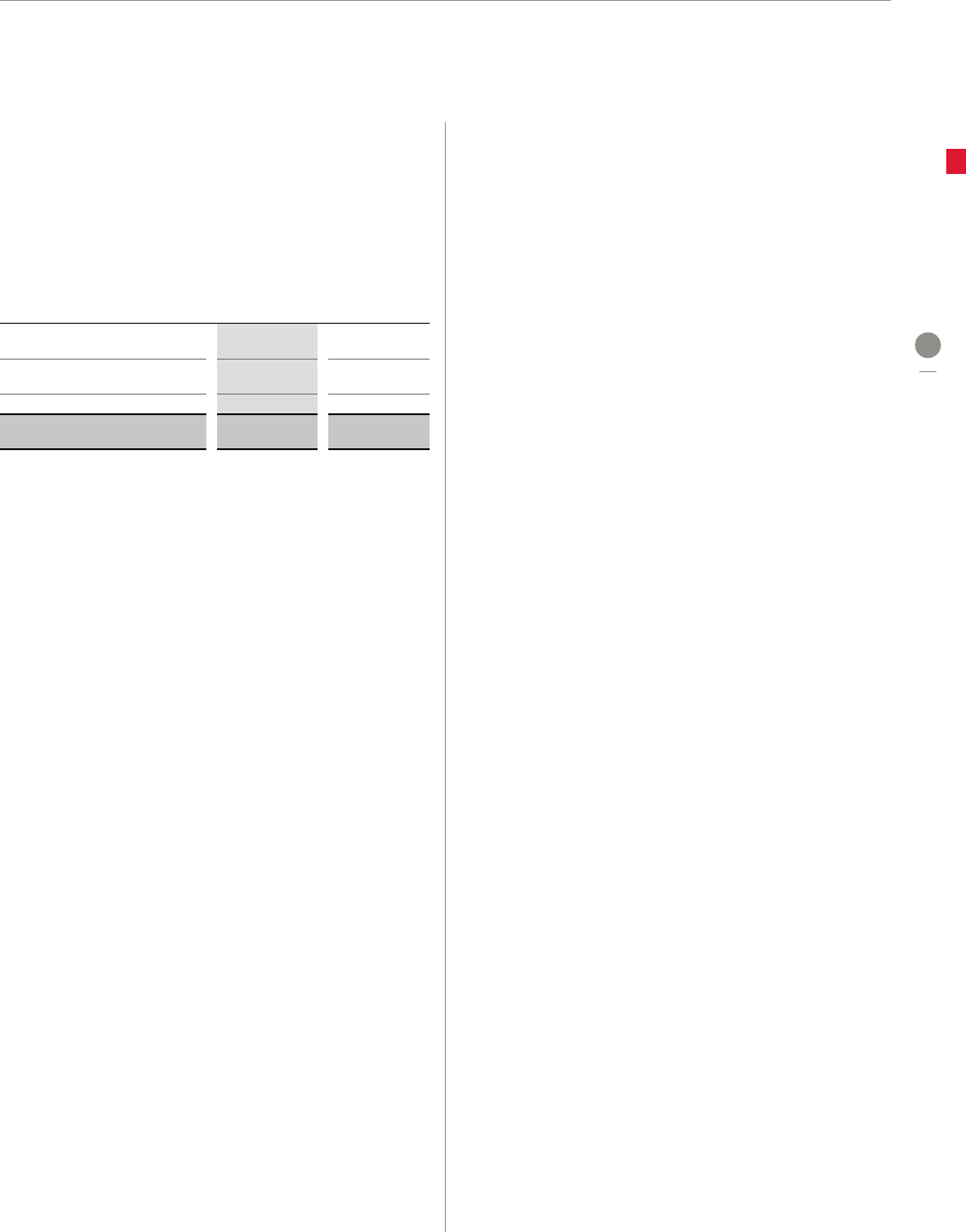
ECONOMIC REPORT
RESEARCH AND DEVELOPMENT
MANAGEMENT REPORT
159
A
Research and development activities in the 2013 fiscal year
reached a total of EUR 3,966 (3,435) million. Development
costs amounting to EUR 1,207 (923) million were capitalized,
representing a capitalization rate of 30.4 (26.9) percent.
Depreciation including reversals on capitalized development
costs totaled EUR 528 (429) million.
Research and development activities
EUR million
2013 2012
Research expense and non-
capitalized development costs 2,759 2,513
Capitalized development costs 1,207 923
Research and development
activities 3,966 3,435
/
TECHNICAL INNOVATIONS
//
NEW ENGINES – DRIVING FUN AND EFFICIENCY
We systematically refined our range of engines in the past fiscal
year with the aim of providing maximum on-road agility and
performance from minimal fuel. To that end, Audi is pursuing
the principle of downsizing, preferring turbocharged to high-
displacement engines.
After a fundamental overhaul that has also led to increased power
outputs, the range of engines for the A8 car line, for example, is
now even more fuel-efficient. The 3.0 TDI clean diesel developing
190 kW (258 hp) is its most efficient power unit, with average
consumption of only 5.9 liters of diesel fuel and CO2 emissions
of 155 g/km.
Another example of high on-road power coupled with fuel
economy is the 2.0 TFSI in the new S3 Sedan – the new car
line’s top version. With an output of 221 kW (300 hp), the
four-cylinder turbo in conjunction with the 6-speed S tronic
transmission uses an average of 6.9 liters of Super Plus gaso-
line and emits 159 g CO2/km.
Audi is also demonstrating its engine manufacturing expertise
through innovative cylinder on demand technology. This paves
the way for cutting fuel consumption by as much as 20 percent
by deactivating cylinders. The cylinder on demand principle is
already available on the 1.4 TFSI in the A1 and A3, and also for
the 4.0 TFSI in the RS 6 Avant, RS 7 Sportback, S6, S6 Avant,
S7 Sportback and S8. The 103 kW (140 hp) 1.4 TFSI with
7-speed S tronic transmission in the new A3 achieves average
fuel consumption of only 4.7 liters of premium gasoline per
100 kilometers, with CO2 emissions of 110 g/km. In the first
half of 2014, cylinder on demand technology will also become
available on the W12 engine in the new Audi A8 L.
//
AWARDS FOR AUDI ENGINES
Audi engines with a wide variety of displacement sizes and
number of cylinders won an array of awards again in 2013.
The Audi 2.5 TFSI engine, for example, was voted “International
Engine of the Year” for the fourth time in succession in its
category. This was the verdict of a panel of 87 motoring jour-
nalists from all over the world. The two Audi core technologies
of turbocharging and FSI direct injection in particular contrib-
uted towards its win (www.ukipme.com/engineoftheyear/
2_25.php#2).
In January 2014, Audi also received the “Ward̕s 10 Best
Engines” award in the United States for its development work
on the latest version of the 1.8 TFSI engine. In the 20th year
of this award, our power unit was listed among the ten best
engines. This list was compiled by eight automotive journalists
who tested and rated 44 engines and drive systems in everyday
conditions in the greater area of Detroit (www.wardsauto.com/
ward039s-10-best-engines/2014-winner-vw-18l-tsi-
turbocharged-dohc-i-4).
//
LIGHTING TECHNOLOGY
Audi has been systematically advancing lighting technology
for many years now – from LED daytime running lights to the
LED headlights that are now already available in a number of
car lines. As conspicuous design features, the headlights not
only define the appearance of Audi models, but also make a
major safety contribution by illuminating the road effectively.
Audi first unveiled its Matrix LED headlights – the high-end
solution in automotive lighting technology – in the latest A8
version. This technology uses almost one billion different
lighting scenarios to fully illuminate the road at all times
without dazzling other road users. The high-beam section of
the Matrix LED headlights is divided up into 25 small light-
emitting diodes, of which groups of five shine through the same
reflector. When the light switch is set to Automatic and the
high beams are on, the system comes on automatically outside
of urban areas above a speed of 60 km/h. As soon as a camera
in the A8 detects other road users, individual LEDs in the head-
lights are switched off or dimmed. Thanks to this function,
oncoming or preceding vehicles are masked out and their drivers
not dazzled, but all other areas are fully illuminated. When
there is no more oncoming traffic or the preceding vehicle is
out of the headlights’ range, the high-beam headlights then


